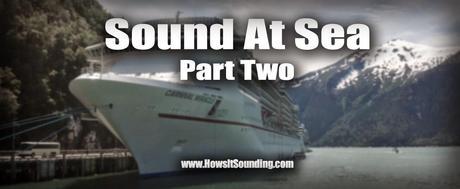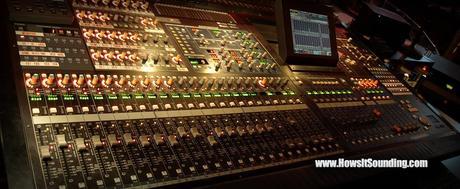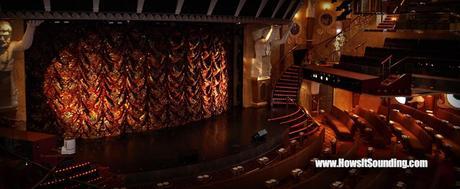
If you have read Part One of Sound at Sea, then you know that I am the sound technician aboard the Carnival Miracle. You also know what I do, and about the shows. I know that a lot of you care about audio gear, so let’s get into that.
Carnival uses quite a bit a gear.We have some old stuff, some new stuff, some good stuff, some questionable stuff, and so on.However, all of it serves a purpose, and it does what it is supposed to do.We have a main lounge (like a theater) where the main shows happen, and many smaller lounges throughout the ship that have their own gear.
Disclaimer: I can’t get into too much detail, due to a signed contract, but everything that I am telling you, you can physically see for yourself if you are ever onboard since all of the audio gear is exposed in public spaces.
The main lounge (the Phantom Lounge) has the most gear, obviously. Where it all starts is an old, beat up, yet still truckin’ Yamaha PM5D. I was told that this particular console is the oldest in the fleet. From time to time, that shows, but it still works. We make use of the onboard effects, and we don’t have any external effects units in the main lounge. We do have two CD players hooked up to it, as well as a MiniDisk player. Actually, each audio rack throughout the entire ship generally has a MiniDisk player, CD player, and cassette player. Needless to say, I’m pretty sure you can figure out which one of the three is the only one used anymore.
 The Yamaha PM5D in the Phantom Lounge
The Yamaha PM5D in the Phantom LoungeBack to the main lounge… Since the Miracle is one of the last ships to have a live band onboard that plays the music for the shows, we do make use of all of the faders on the PMD5.Again, while I can’t exactly tell you how we get the audio to and from the band cart, I will say that each member of the band has their own Aviom unit so he or she can create his or her own mix.I have a “master unit,” so to speak, up at my sound booth, so I can listen in to what each mix sounds like if I choose to.
Probably one of the most important pieces of gear that I have is an Alesis ADAT machine.While, again, I can’t go into too much detail about what we use it for, I will say that it is what sends timecode to everyone else (lights and automation).If I don’t enable timecode or if I don’t start the machine, no one gets timecode, and the show can’t start.
The last pieces of important gear up there are all of our wireless receivers.They are made up of Shure units and Elecrovoice units.We have two, two channel Shure units (for four channels), and six Electovoice units.The Shure units are for our main production singers with their wireless SM58s and Countryman headset mics, and the EV ones are for all of our host mics, and other mics throughout the shows which are mainly wireless RE2s, and other various mics hooked up to EV transmitters.That’s about all I can say, because if you are sitting in the front row, you could identify all this yourself.

The Phantom Lounge on board the Carnival Miracle
Having wireless is a blessing in any live performance, but being on a ship, you have some expected problems: interference.In the main lounge alone, you can deduce that we have eight different frequencies that we have to take into consideration.If we get close to another ship, or in certain ports, very loud inference blasts over the EAW speakers we have.As of yet, in the main lounge at least, that only time we have this issue is when we are docked in Seattle.Since that is our current homeport for now, we don’t have anything going on in there until we are sailing.I just mute all of the wireless channels until we are far enough away, and the first event happens in the lounge.Until then, we have plenty of wired options available if a mic is needed.
For anyone interested in monitors, here is where it gets interesting.We actually don’t use in-ear monitors for our singers.Our system is just not set up for that.Instead, we have six downstage monitors recessed under the stage, upstage monitors hanging, and two floor wedges that we can set up.The wedges never get used during production shows because they are placed where the bandcart is lowered into the pit.Our singers are great, and they do a very good job at dealing with the less then ideal situation for them.
That’s pretty much all I can say about the gear in the main lounge.Next time, I’ll go into some detail about the other lounges.Is there something that you wanted to know more about?Let me know in the comment section, and I’ll do my best to answer.Keep looking out for my next adventure update!

